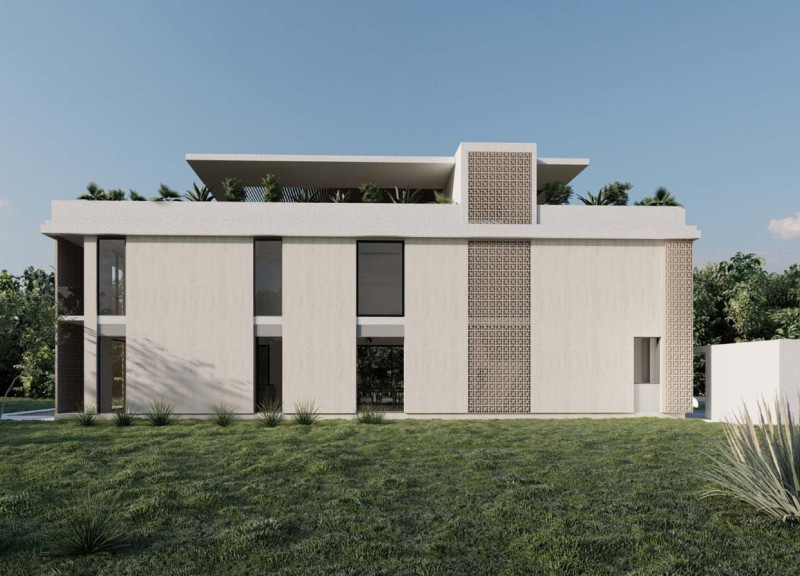5 key facts about this project
At its core, the project represents a commitment to sustainable practices and innovative design. The architects carefully considered the building's function, creating spaces that facilitate various activities and promote a sense of community. The layout is designed to accommodate diverse uses, whether it be collaborative work, social events, or informal gatherings. This multifunctionality is key to its overall success, allowing the architecture to adapt to the evolving needs of its users.
One of the notable aspects of this project is its architectural detailing, which speaks to both craftsmanship and contemporary design principles. The façade employs a harmonious blend of materials, including reinforced concrete, sustainable timber, and low-energy glazing systems, all chosen for their environmental benefits and visual appeal. The careful selection and application of these materials foster a dialogue between the building and its surroundings, enhancing the overall sense of place.
The entrance of the building is designed to be welcoming, featuring ample transparency that encourages a connection between the interior and the exterior. Large windows invite natural light into the interior spaces, promoting well-being and reducing reliance on artificial lighting. This design approach not only enhances the aesthetic quality of the interior but also serves to reduce the building's overall energy consumption.
The spatial organization of the project reflects a clear understanding of how people interact within communal spaces. Open-plan areas encourage collaboration and movement, while quieter zones are strategically placed to allow for moments of reflection and concentration. The use of flexible partitions further allows the spaces to be tailored to specific needs, making the architecture responsive and dynamic.
Landscaping plays a critical role in the project, seamlessly integrating the building within its environment. The inclusion of green roofs and native plantings promotes biodiversity and contributes to the building's thermal efficiency. Outdoor gathering spaces are designed as an extension of the indoor environment, creating areas for relaxation and social interaction. This biophilic approach not only enhances the user experience but also demonstrates a respect for the natural ecosystem.
Unique design strategies are evidenced throughout the project. The architects employed passive design techniques that minimize energy use through thoughtful orientation and shading. Features like overhangs and strategic window placements help control solar gain while maintaining views of the surrounding landscape. These architectural ideas serve to create comfortable living and working environments that are energy-efficient.
The project's commitment to sustainability extends beyond materials and design. The integration of advanced systems such as solar panels and rainwater collection systems reflects an innovative approach to resource management. This focus on efficiency not only benefits the environment but also offers long-term economic advantages to its users.
Overall, the project exemplifies how architecture can enhance community life while addressing contemporary sustainability challenges. Its design promotes interaction, fosters a sense of belonging, and thoughtfully connects to the space it occupies. To explore the architectural plans, sections, and various design elements in greater detail, please take a deeper look at the project presentation. The architectural ideas showcased here offer insights into how modern design can harmonize with community and environment, serving as an inspiration for future developments.


 Andrijana Savikj
Andrijana Savikj 























